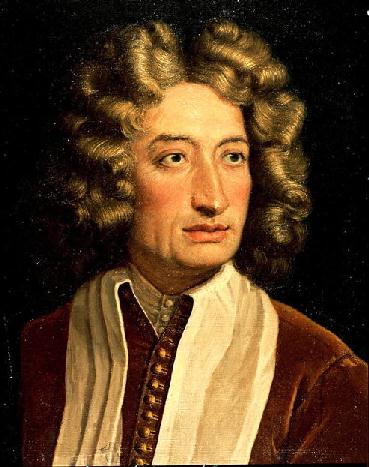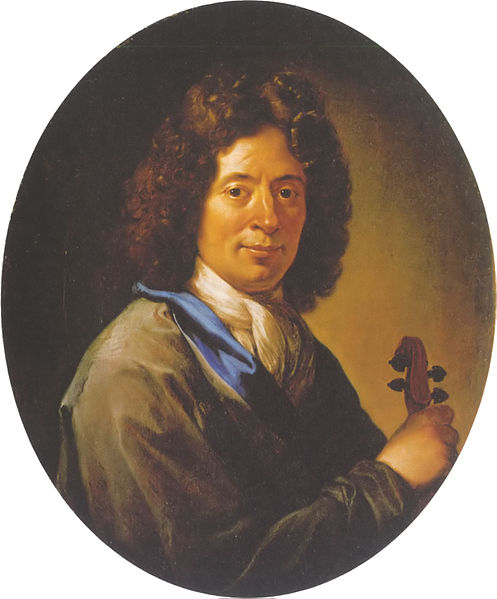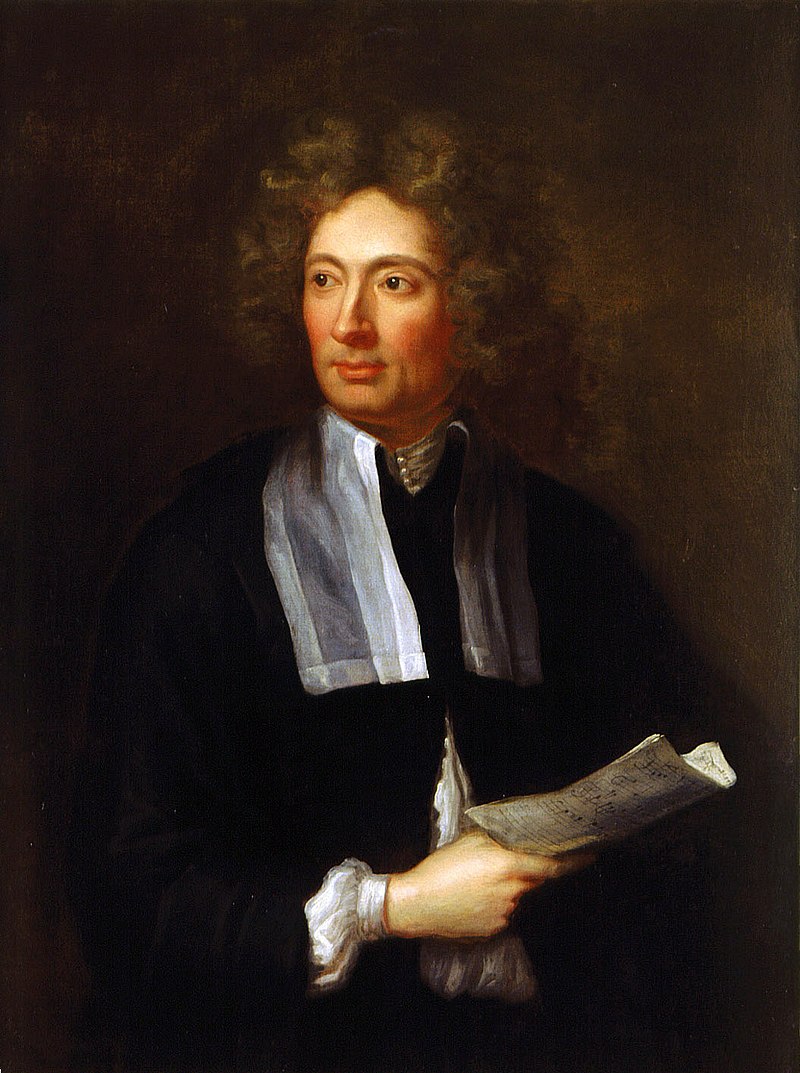<Back to Index>
- Violinist and Composer Arcangelo Corelli, 1653
PAGE SPONSOR



Arcangelo Corelli (17 February 1653 - 8 January 1713) was an Italian violinist and composer of the Baroque era.
Corelli was born on 17th February 1653 in the small Romagna town of Fusignano, then in the diocese of Ferrara. His family were land owners who had lived in Fusignano since 1506 (a Corelli moved to the area from Rome in the fifteenth century); although apparently prosperous, they were certainly not of the nobility, as several fanciful accounts of the composer's genealogy subsequently claimed. Corelli's father, from whom he took the name Arcangelo, died five weeks before the composer's birth. Consequently, he was raised by his mother, Santa (née Raffini), alongside four elder siblings.
The wealth of anecdotes and legends attached to Corelli contrasts with the relative paucity of truly reliable contemporary evidence documenting events in his life. This gap is especially pronounced for his formative years, including his musical education, even though traditional accounts of a highly idealized childhood have long been debunked. According to the poet Giovanni Mario Crescimbeni, who presumably knew the composer well, Corelli initially studied music in the nearby towns of Faenza and Lugo, before moving in 1666 to Bologna. A major center of musical culture of the time, Bologna had a flourishing school of violinists associated with Ercole Gaibara and his pupils, Giovanni Benvenuti and Leonardo Brugnoli. Reports by later sources link Corelli's musical studies with several master violinists, including Benvenuti, Brugnoli, Bartolomeo Laurenti and Giovanni Battista Bassani. Although historically plausible, these accounts remain largely unconfirmed, as does the claim that the papal contralto Matteo Simonelli first taught him composition. A remark Corelli later made to a patron suggests that his musical education focused mainly on the violin.
Chronicles of the Accademia
Filarmonica of Bologna indicate that Corelli was
accepted as a member by 1670, at the exceptionally young
age of seventeen; the credibility of this attribution has
been disputed.
Although the nickname Il Bolognese appears on the
title pages of Corelli's first three published sets of
works (Opus 1 to 3), the duration of his stay in Bologna
remains unclear. Anecdotes of trips outside Italy to
France, Germany and Spain lack any contemporary evidence.
For example, the story that Corelli's continental fame
stemmed from a trip to Paris at the age of nineteen, when
he had to be chased away by an envious Jean-Baptiste Lully
seems to have originated with Jean - Jacques Rousseau. It
was also claimed that Corelli spent time in Germany in the
service of Maximilian II Emanuel, Elector of Bavaria
(supposedly in 1681), as well as in the house of his
friend and fellow violinist - composer Cristiano Farinelli
(between 1680 and 1685).
In 1685 Corelli was in Rome, where he led the festival performances of music for Queen Christina of Sweden; he was also a favorite of Cardinal Pietro Ottoboni, grandnephew of another Cardinal Pietro Ottoboni, who in 1689 became Pope Alexander VIII. From 1689 to 1690 he was in Modena; the Duke of Modena was generous to him. In 1708 he returned to Rome, living in the palace of Cardinal Ottoboni. His visit to Naples, at the invitation of the king, took place in the same year.
The style of execution introduced by Corelli and
preserved by his pupils, such as Francesco Geminiani,
Pietro Locatelli, and many others, was of vital importance
for the development of violin playing. It has been said
that the paths of all of the famous violinist - composers
of 18th century Italy led to Arcangelo Corelli who was
their "iconic point of reference".
However, Corelli used only a limited portion of his instrument's capabilities. This may be seen from his writings; the parts for violin very rarely proceed above D on the highest string, sometimes reaching the E in fourth position on the highest string. The story has been told and retold that Corelli refused to play a passage that extended to A in altissimo in the overture to Handel's oratorio The Triumph of Time and Truth (premiered in Rome, 1708), and felt seriously offended when the composer (32 years his junior) played the note.
Nevertheless, his compositions for the instrument mark an epoch in the history of chamber music. His influence was not confined to his own country. Johann Sebastian Bach studied the works of Corelli and based an organ fugue (BWV 579) on Corelli's Opus 3 of 1689.
Musical society in Rome also owed much to Corelli. He was received in the highest circles of the aristocracy, and for a long time presided at the celebrated Monday concerts in the palace of Cardinal Ottoboni.
Corelli died in Rome in possession of a fortune of 120,000 marks and a valuable collection of artworks of art and fine violins, the only luxury in which he had indulged. He left both to his benefactor and friend, who generously made over the money to Corelli's relatives. Corelli is buried in the Pantheon at Rome. One can still trace back many generations of violinists from student to teacher to Corelli (the "Corelli school").
His compositions are distinguished by a beautiful flow of melody and by a mannerly treatment of the accompanying parts, which he is justly said to have liberated from the strict rules of counterpoint.
His concerti grossi
have often been popular in Western culture. For example, a
portion of the Christmas Concerto, Op. 6 No. 8,
is in the soundtrack of the film Master and Commander:
The Far Side of the World. He is also referred to
frequently in the novel Captain Corelli's Mandolin.